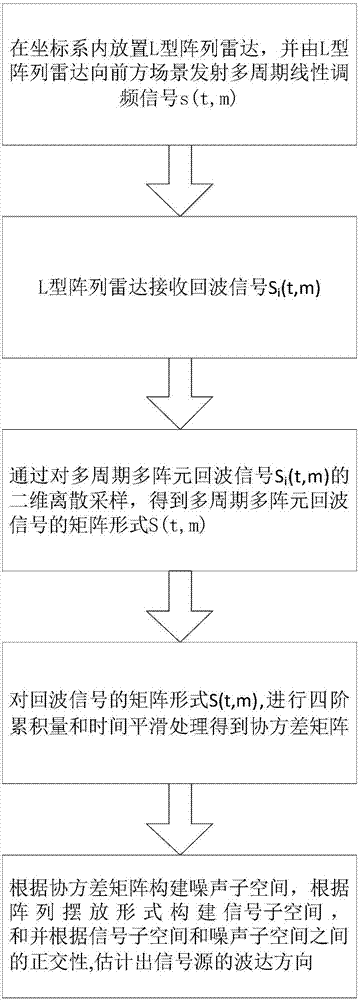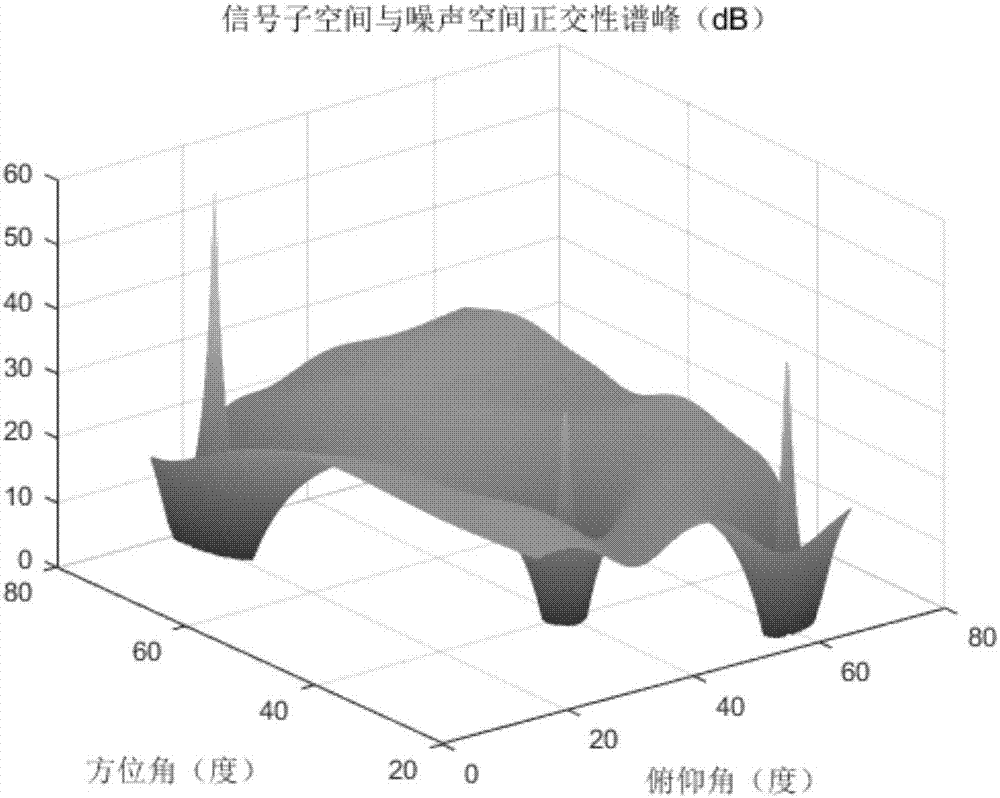Method for estimating two-dimensional direction-of-arrival of coherent signal source by means of L-shaped array based on time smoothing
A technology of time smoothing and direction estimation, applied in the field of radar, can solve problems affecting the estimation accuracy of direction of arrival, small amount of calculation, and reduction of array aperture, so as to ensure noise resistance and Lubang performance, avoid aperture loss, and improve Estimate the effect of ability
- Summary
- Abstract
- Description
- Claims
- Application Information
AI Technical Summary
Problems solved by technology
Method used
Image
Examples
Embodiment Construction
[0037] The embodiments and effects of the present invention will be further described in detail below in conjunction with the accompanying drawings.
[0038] refer to figure 1 , the implementation steps of the present invention are as follows:
[0039] Step 1: Place the L-array radar in the coordinate system, and the L-array radar transmits multi-period chirp signals to the scene Z ahead.
[0040] (1a) Place all radar elements on the ground, take the south direction as the positive direction of the x-axis, take the due east direction as the positive direction of the y-axis direction, take the intersection of the x-axis and the y-axis as the origin, and move from half wavelength Arrange n array elements at a distance of , and λ represents the carrier wavelength; arrange n-1 array elements at a distance of d in the positive direction of the y-axis, forming an L-shaped array radar composed of 2n-1 array elements ;
[0041] (1b) The L-shaped array radar transmits a multi-peri...
PUM
 Login to View More
Login to View More Abstract
Description
Claims
Application Information
 Login to View More
Login to View More - R&D
- Intellectual Property
- Life Sciences
- Materials
- Tech Scout
- Unparalleled Data Quality
- Higher Quality Content
- 60% Fewer Hallucinations
Browse by: Latest US Patents, China's latest patents, Technical Efficacy Thesaurus, Application Domain, Technology Topic, Popular Technical Reports.
© 2025 PatSnap. All rights reserved.Legal|Privacy policy|Modern Slavery Act Transparency Statement|Sitemap|About US| Contact US: help@patsnap.com



